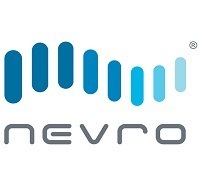 Nevro Corporation has announced online publication of 12-month data from the SENZA-NSRBP randomised controlled trial (RCT) in Journal of Neurosurgery: Spine. These data show that high-frequency 10kHz spinal cord stimulation (SCS) therapy results in profound improvements in non-surgical refractory back pain (NSRBP) compared to conventional medical management (CMM), a company press release states.
Nevro Corporation has announced online publication of 12-month data from the SENZA-NSRBP randomised controlled trial (RCT) in Journal of Neurosurgery: Spine. These data show that high-frequency 10kHz spinal cord stimulation (SCS) therapy results in profound improvements in non-surgical refractory back pain (NSRBP) compared to conventional medical management (CMM), a company press release states.
Published 12-month data from the SENZA-NSRBP RCT—the first RCT conducted in a large NSRBP patient population, according to Nevro—show sustained effectiveness of 10kHz therapy. Outcomes are reported on 121 patients implanted with the Senza 10kHz SCS system, including those who crossed over from the CMM arm to 10kHz therapy.
These results were disclosed for the first time in a late-breaking presentation from the SENZA-NSRBP study’s lead investigator Leonardo Kapural (Carolinas Pain Institute, Winston-Salem, USA) at the North American Neuromodulation Society (NANS) annual meeting (13–15 January 2022; Orlando, USA).
“There is a significant unmet need for safe and effective, non-pharmacologic therapy for NSRBP, as currently there are few effective treatment options,” said Kapural. “This study provides high-level clinical evidence and confidence to the neurosurgery community regarding a therapeutic option for intractable back pain when a patient is not a candidate for spine surgery. All patients in this trial had tried and failed conventional medical management for an average duration of eight years, and experienced profound improvements in pain, disability and quality of life with 10kHz SCS at 12 months post-implant.”
Nevro’s SENZA-NSRBP study is comparing the company’s proprietary high-frequency SCS plus CMM to CMM alone in 159 randomised patients at 15 study centres. The primary endpoint at three months and the secondary endpoints at six months were all met—demonstrating superior responder rate and significant pain relief for the 10kHz SCS cohort versus CMM, according to Nevro. All outcomes were stable to 12 months in the 10kHz SCS arm and participants who crossed over to receive 10kHz SCS therapy had comparable improvements post-crossover. Study participants continue to be followed out to 24 months.
Twelve-month data from the SENZA-NSRBP RCT formed the basis of the company’s recent US Food and Drug Administration (FDA) approval, which made Nevro the only SCS company with a specific, on-label indication for treating NSRBP patients, according to a press release. As per the release, these data demonstrated the following benefits of 10kHz therapy for this indication:
Durable pain relief
- At 12 months, 78.2% of participants in the 10kHz SCS study arm reported pain relief >50%, while the average pain relief was 72.1% (% reduction of visual analogue scale [VAS] score from baseline).
- In the crossover arm, 78.2% of participants reported pain relief >50%, and average pain relief was 70.4% (% reduction of VAS score from baseline) after six months with 10kHz therapy.
Consistent safety
- The study-related adverse event rates reported here are similar to what has been reported in the literature, including the Senza-RCT.
- Only three of 145 permanent SCS devices were explanted for a 2.1% explant rate (all explants were due to wound complications).
- There were no explants due to loss of efficacy.
Functional improvement
- The average score on the Oswestry Disability Index (ODI) at baseline indicated severe disability while, post-implant, the scores improved to borderline minimum/moderate disability (an average 20-point reduction).
- Three quarters of the subjects receiving 10kHz therapy had clinically significant improvement (≥10 points) in ODI or were in the minimally disabled category at the end of 12 months of follow-up for the 10kHz SCS group (six months post-implant for the crossover group).
Opioid use
- Despite no specified opioid weaning protocol, usage in this study declined significantly by 46% on average in subjects receiving treatment at six and 12 months.












